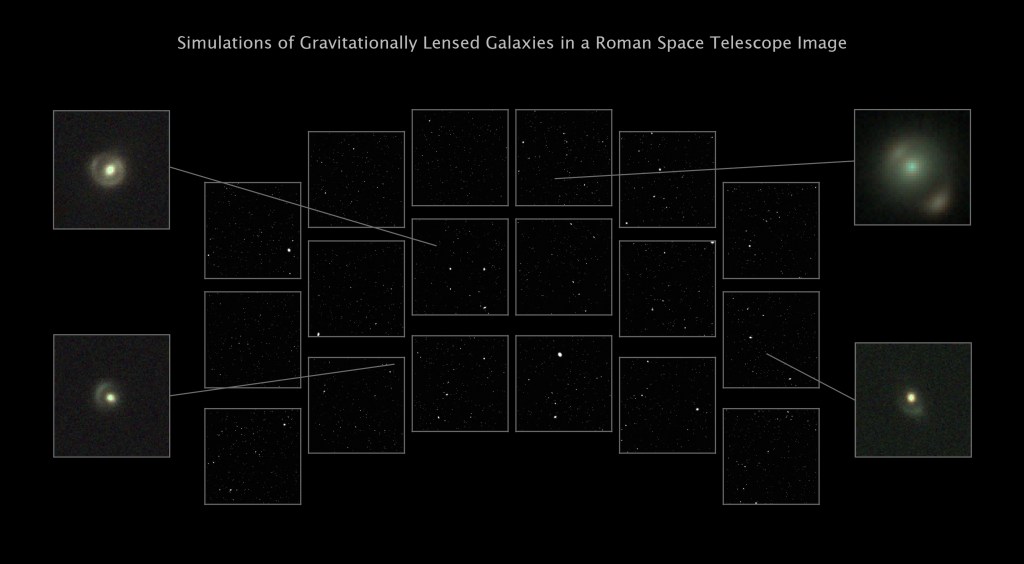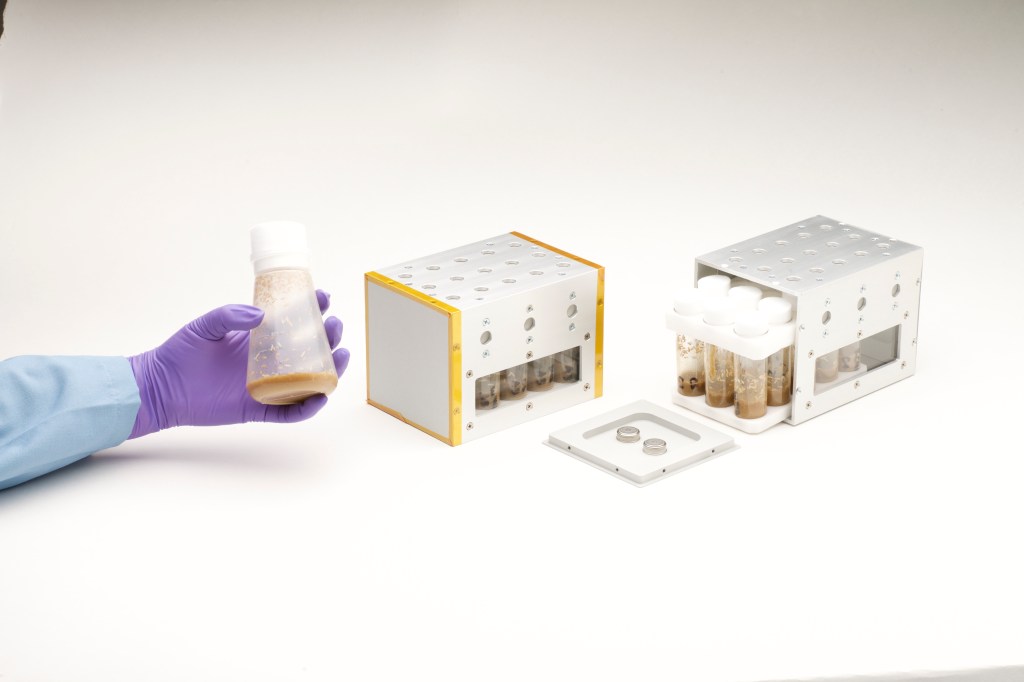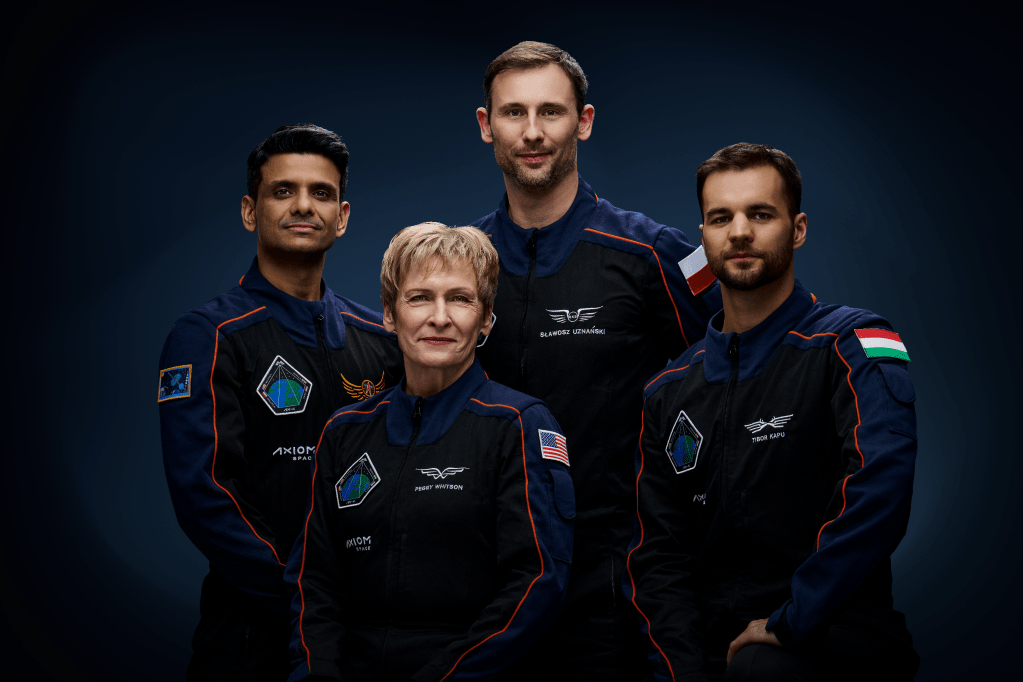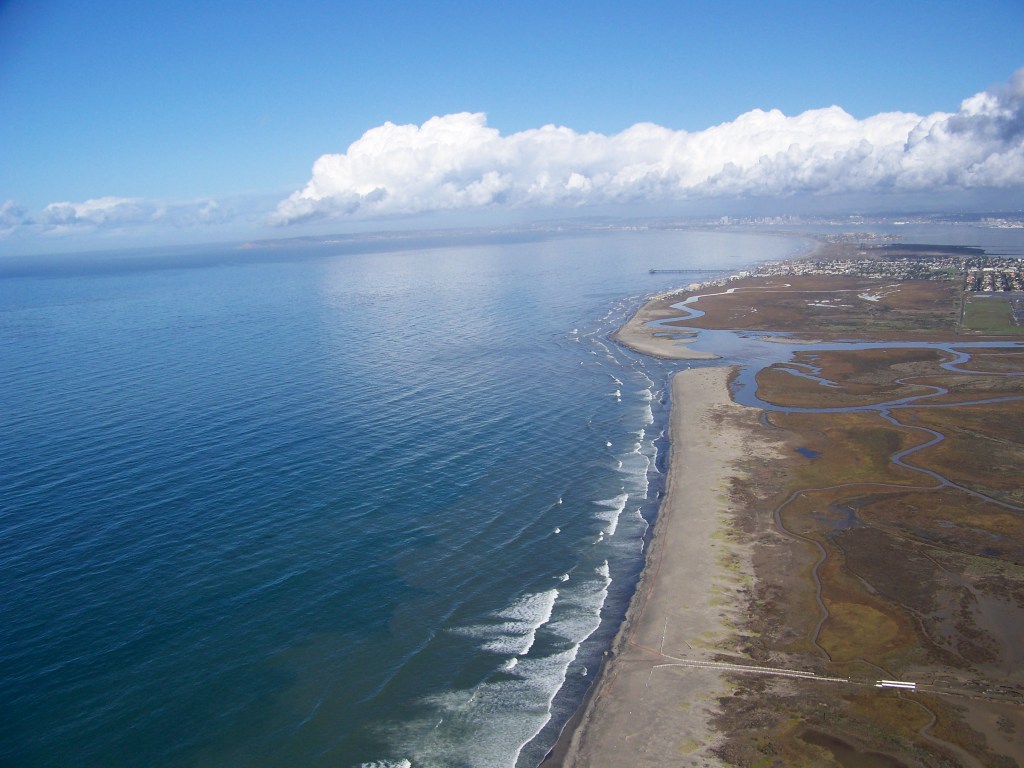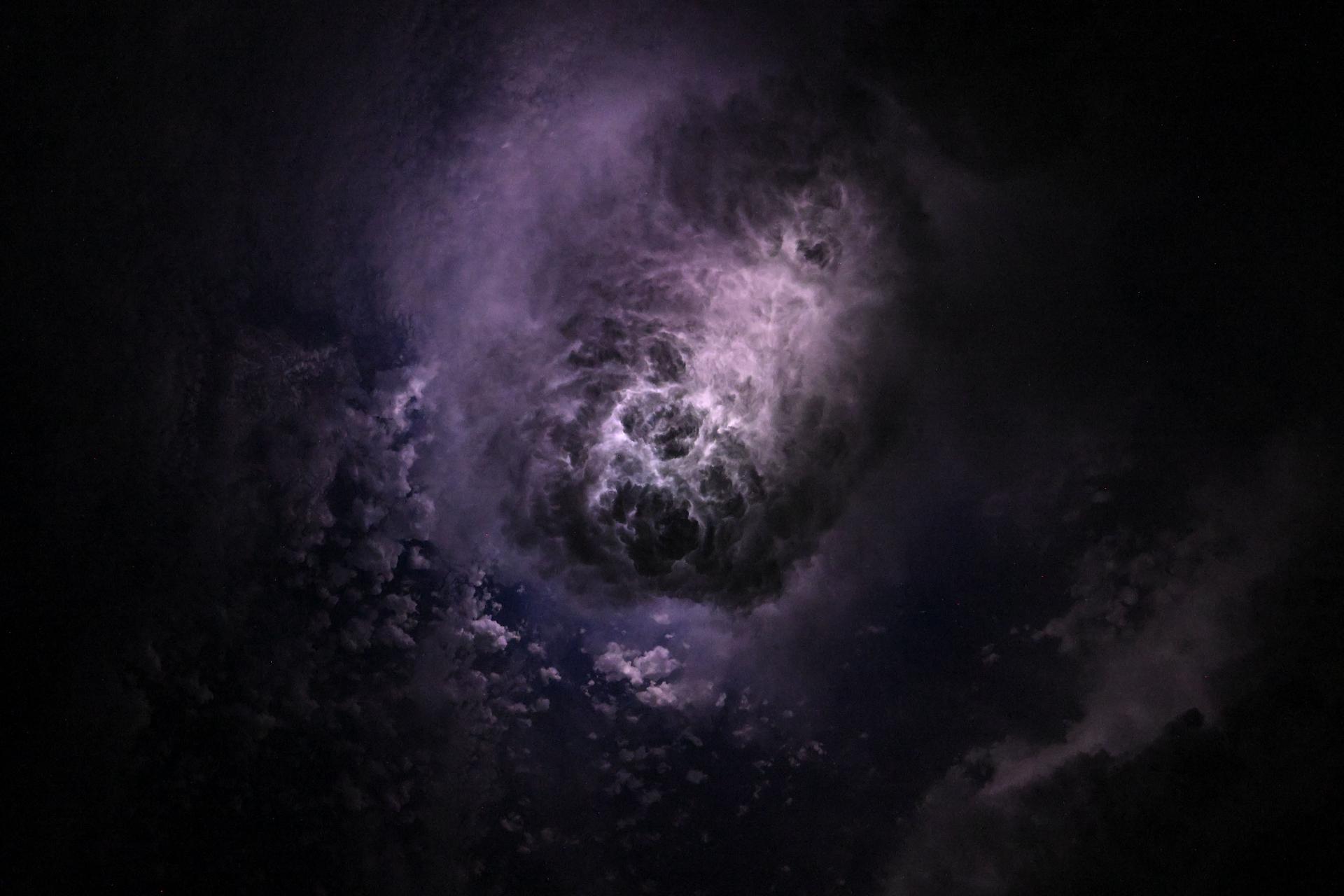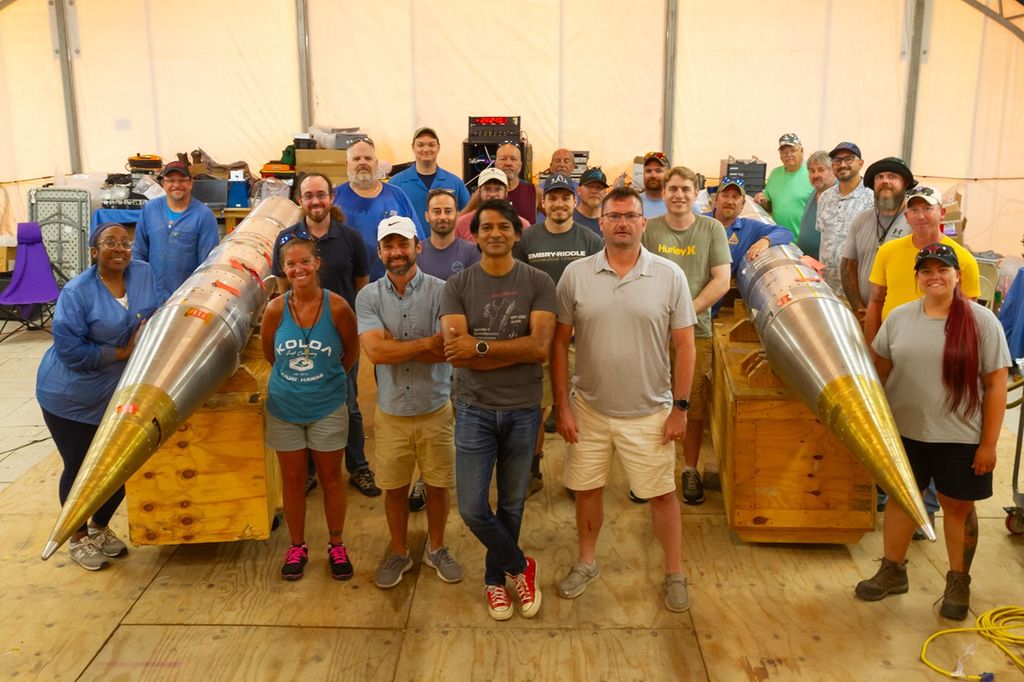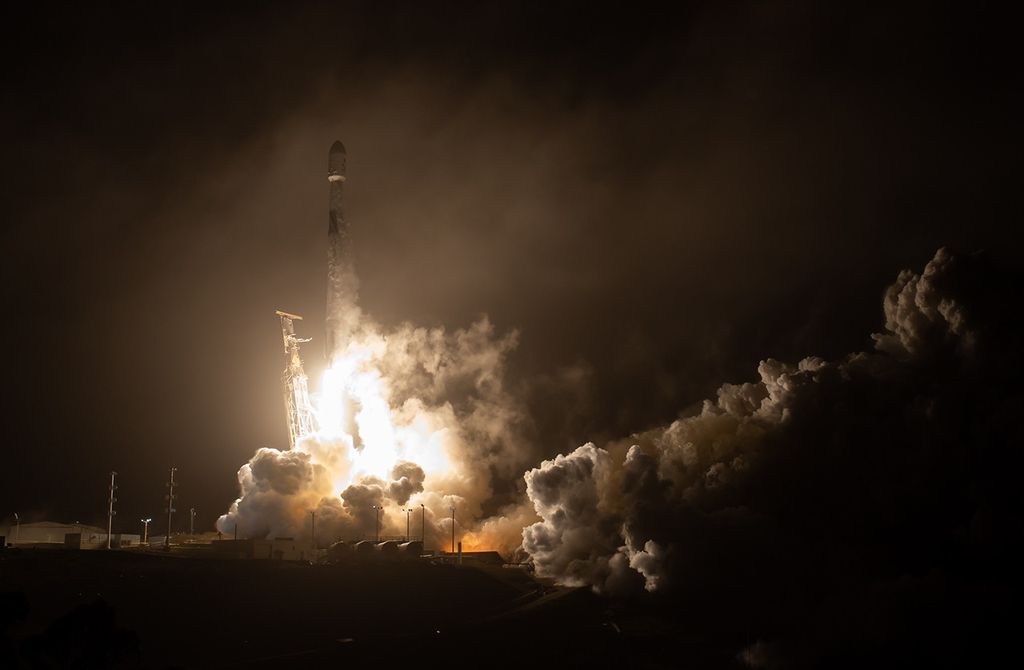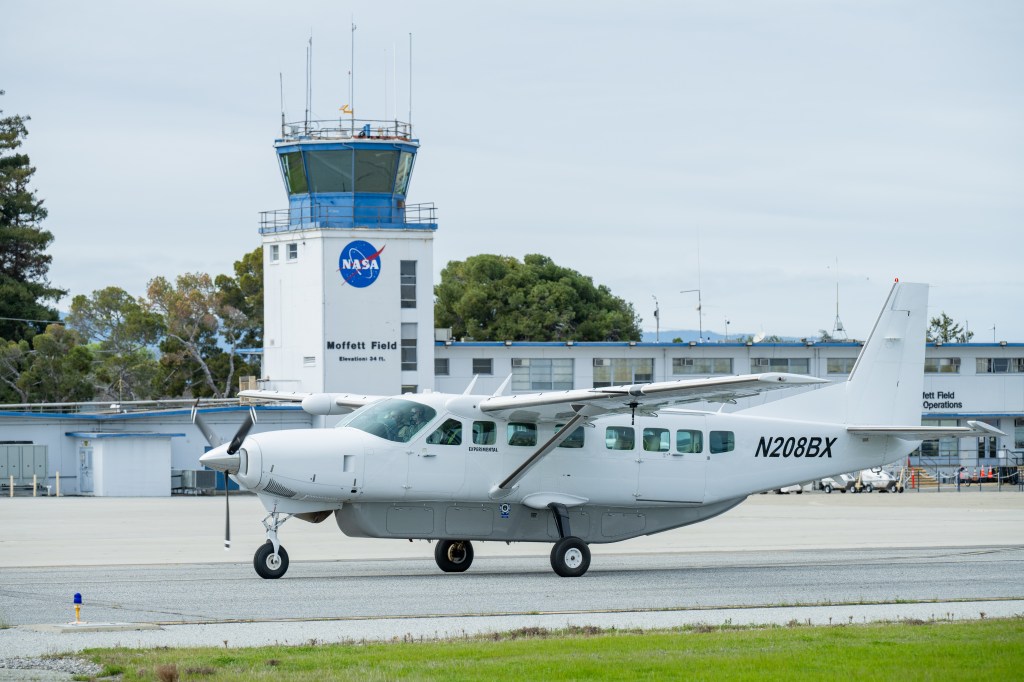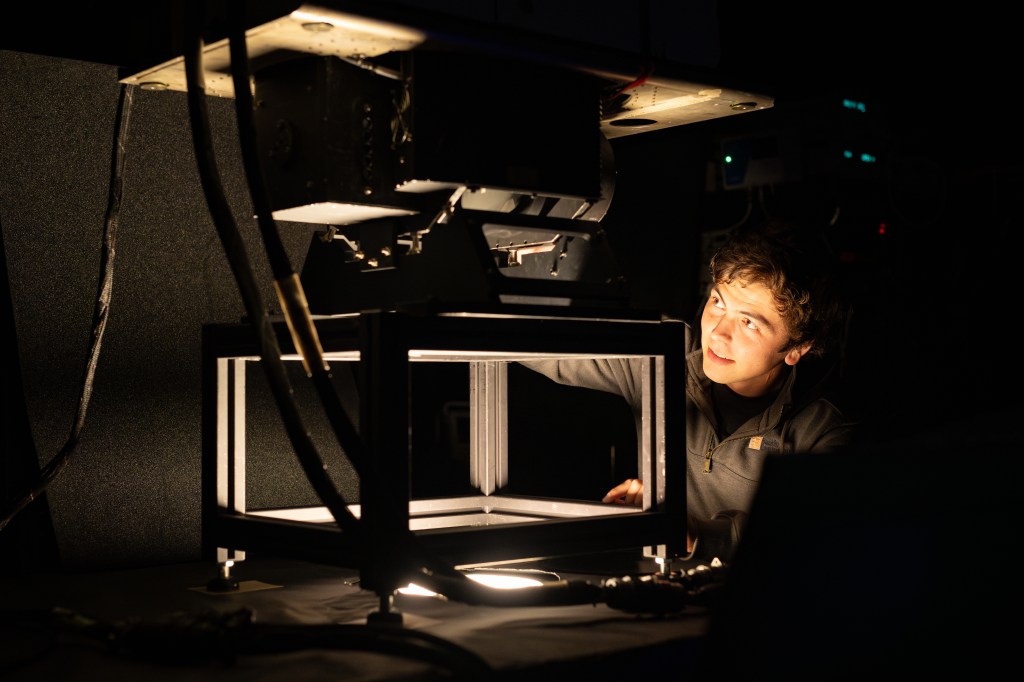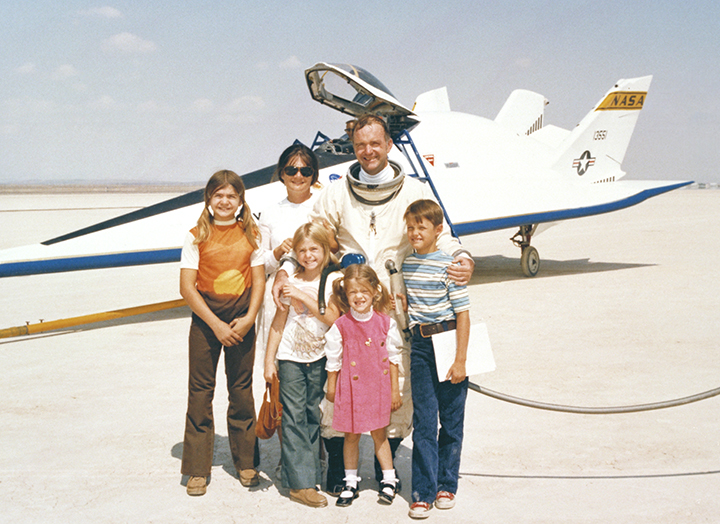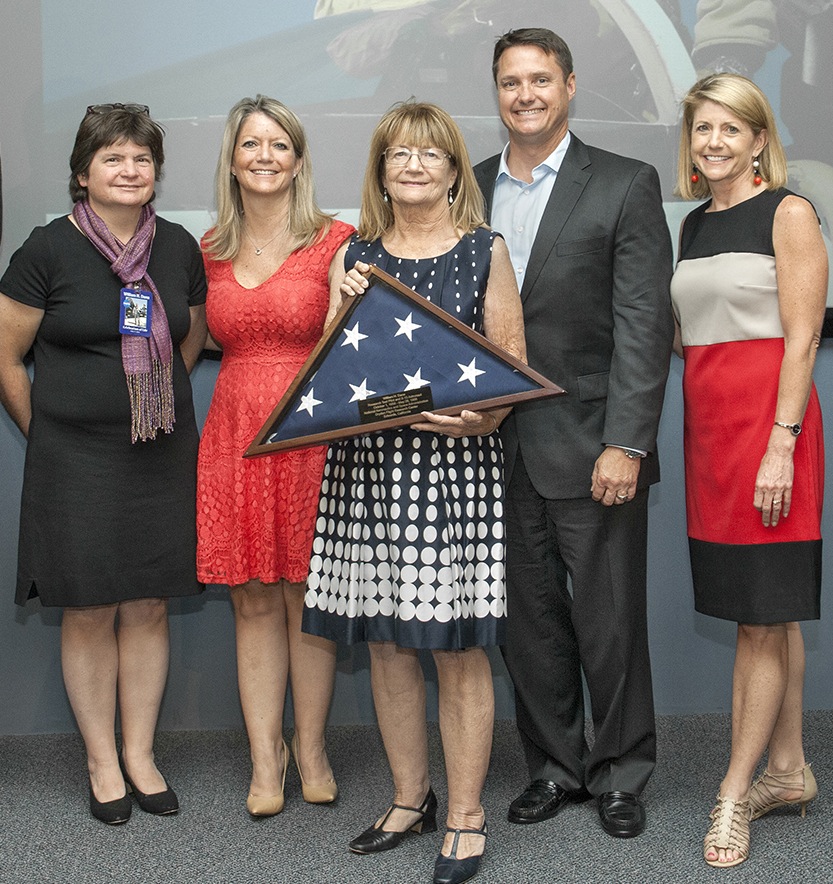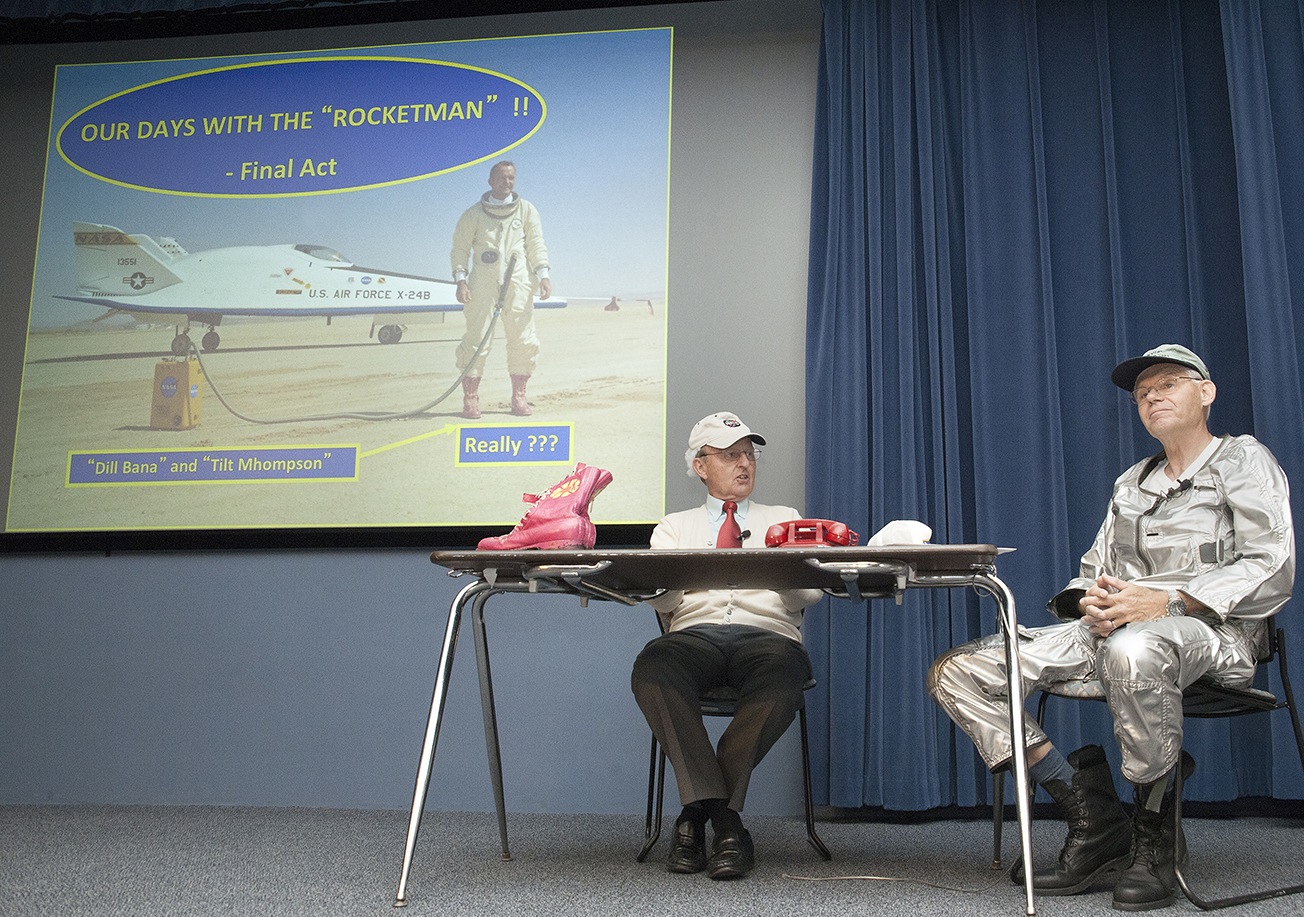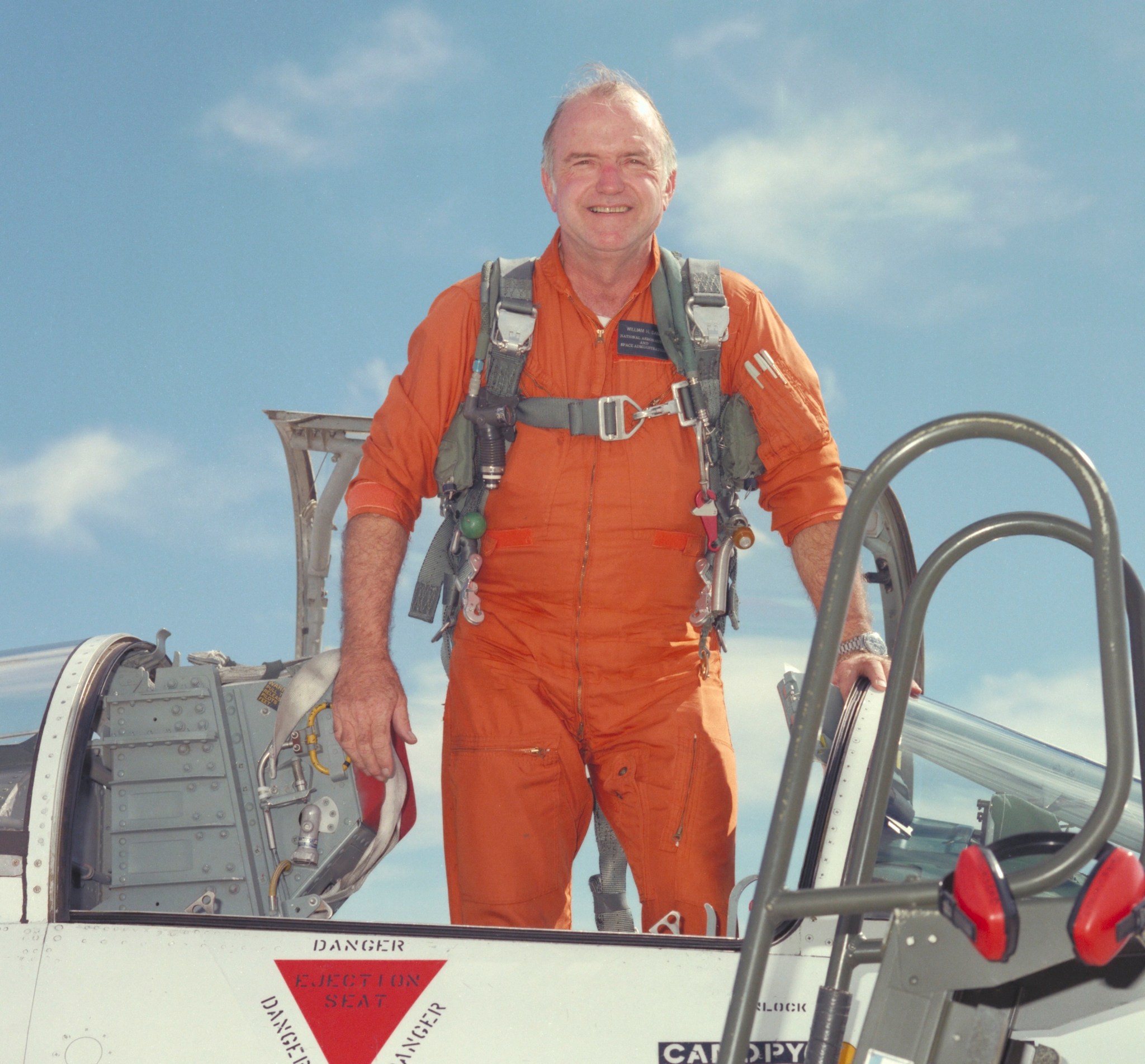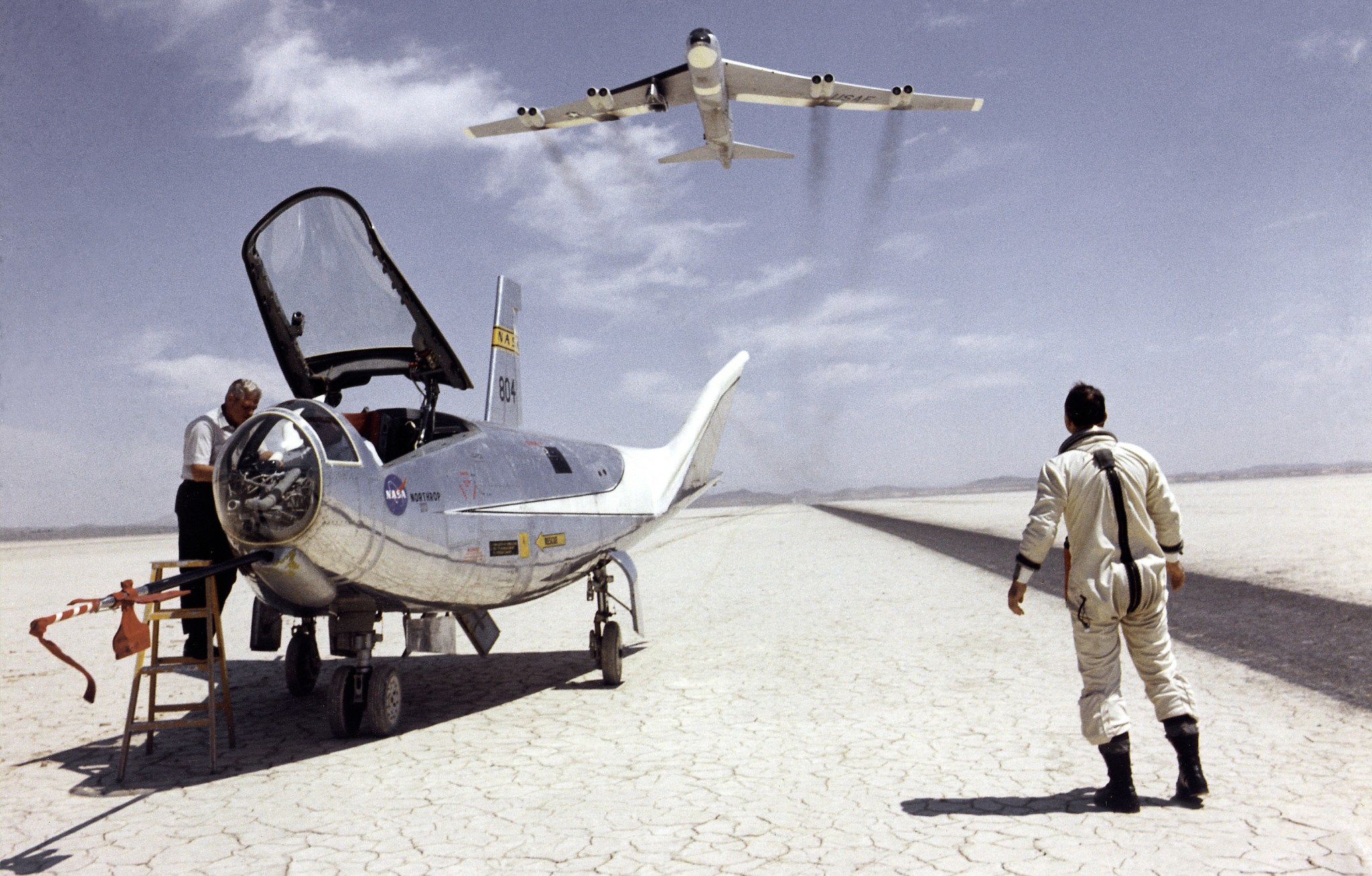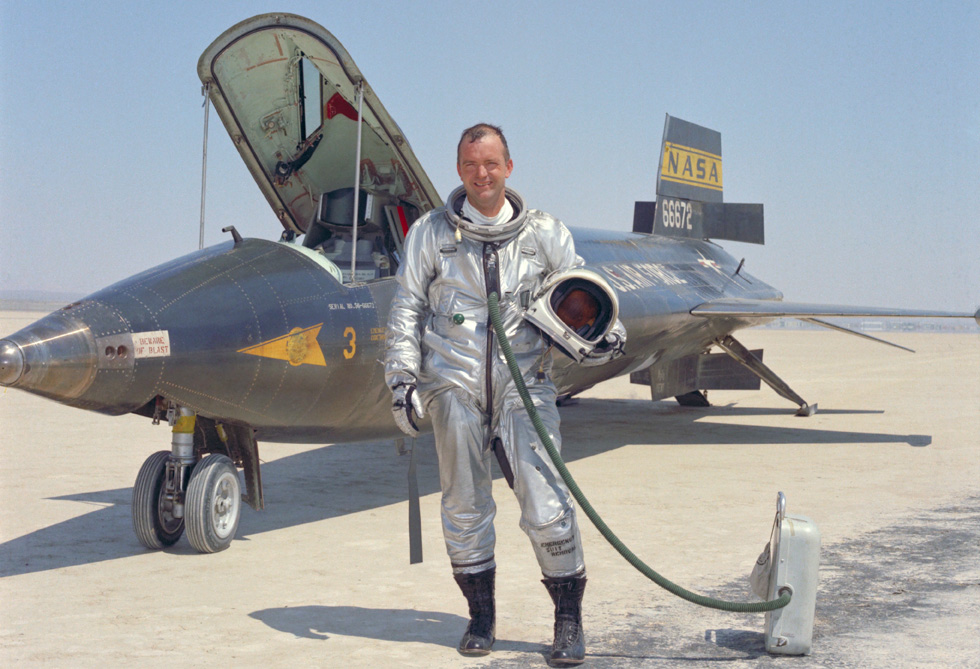
Internationally recognized former NASA research test pilot Bill Dana expressed through actions, not words, that he was among the best of the best at what he did. He was honest, humble, had great integrity and was the ultimate professional.
Those were just a few thoughts mentioned at a celebration of Dana’s life at NASA Armstrong Flight Research Center July 17. Dana died May 6, 2014 at the age of 83.
Best known for his flights in the X-15 rocket plane and a series of lifting body aircraft, he also was a legendary prankster with a sense of humor that made him a favorite at the center. In a 2008 survey developed for employees to recognize some of the driving forces of the center, Dana received more mentions than anyone else.
Center Director David McBride recalled his first experience with Dana, as the test pilot exited an F-104 aircraft: “His smile would light up any day.”
Former center director Ken Szalai recalled a M2-F3 lifting body post-flight meeting. It was the first flight of the aircraft after pilot Bruce Peterson was seriously injured in the lakebed crash of the M2-F2, the prior version of the vehicle. The M2-F2 had been rebuilt with a third vertical tail and other improvements to become the M2-F3. Dana was assigned to be in the cockpit during its initial sortie.
“Dana was the only one who was not concerned and it was a flawless flight,” Szalai said. “Everyone in the room stood and applauded.”
Dana recalled years later that it was the first and only time that he had received a standing ovation and that he didn’t understand it. He said he was not surprised by the flight because he knew from his work that he was flying a safe aircraft.
Many speakers touched on Dana’s mantra to “Always take the job seriously, but never take yourself seriously.”
Dana was very serious and very thorough in his preparation and that was one of the reasons many people believed that he was so successful. His more than 40-year career started on Oct. 1, 1958, the day when the National Advisory Committee for Aeronautics became the National Aeronautics and Space Administration.
A prime example of Dana’s professionalism was his work on the two remotely piloted Highly Maneuverable Aircraft Technology, or HiMAT, aircraft in the late 1970s.
“Bill was skeptical about unmanned aircraft,” Szalai said.
Despite Dana not being a fan of unmanned vehicles, his contemporaries said he worked hard on the challenging project. In fact, he commented that flying HiMAT “was every bit or more demanding physically and mentally than a ‘real’ aircraft.”
Former Center Director Kevin Petersen said Dana, “worked tirelessly to make projects successful.” Petersen also had a number of opportunities to work with Dana and said the test pilot showed both “passion and kindness.”
Former deputy center director Ted Ayers, a former neighbor to Dana in Tehachapi, said Dana had “class and style” and although he was a legendary pilot, he “did not brag about it.”
Dana’s success was also attributed to his devoted and dedicated family, many of whom spoke at the memorial.
“He had a passion for flying and he loved working here at NASA,” Dana’s daughter Jan Sieving said. “He loved people and he particularly loved you people.”
Matt Dana, Bill’s son, has flown F-16s for the U.S. Air Force for 25 years. He said his father never pushed him, only encouraged him. “My real influence was the people here and the environment, where you feel like you are part of something bigger than yourself.”
Former center test pilots Eddie Schneider and Rogers Smith, known for their humorous skits and as well as for their work on cutting-edge aircraft, staged a salute to Dana and another legendary NASA X-15 test pilot, the late Milt Thompson.
Schneider and Smith portrayed Dana and Thompson as if they were meeting in heaven. The skit touched on the more human aspects of the men.
One of their stories recounted how Dana came to wear pink boots on the last test flight of the X-24B on Sept. 23, 1975. New flight suits were white, not the silver ones the pilots previously wore. Dana took exception to the white boots that accompanied the new suits. Dana insisted that no self-respecting test pilot would wear white boots and he would rather wear pink boots than white ones.
So on the day of his flight he found a pair of painted pink boots with daisy decals on them in his locker. He later did have a pair of black boots, but he wore the pink ones for the flight, which is captured in a photo from the era. The actual boots were displayed at the celebration of life event.
Sieving explained another aspect of that story involving the late Ralph Jackson, a former center public affairs chief, that suggests there was some payback involved in the prank. Ralph had three daughters and his wife was pregnant. Jackson was convinced it would be a boy. Dana threw a baby shower/poker game for Jackson.
“So naturally Dad and friends threw him a ‘Think Pink’ party. Somewhere in there they stole Ralph’s size 13 shoes, painted them pink and hung them above the table like baby booties,” she said.
While Dana enjoyed practical jokes, he was always serious about his work.
“Dana was the consummate professional and humble,” said Schneider, who was master of ceremonies for the celebration. “It was a great ride and a pure joy to be on his wing.”
“We have lost a humble giant, but his legacy is forever,” Rogers added.


